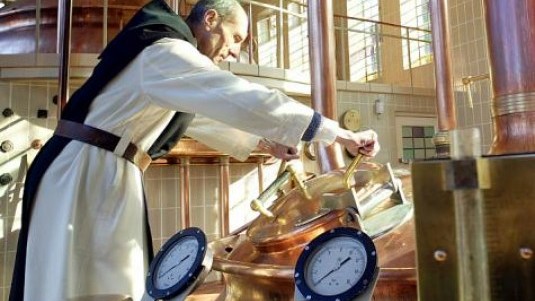Rochefort n.6, Trappist by vocation

Armand Jean Le Bouthillier de Rancé was certainly not a saint. With his wild, in certain ways anarchist, radical and courageous ways, Armand did not exactly incarnate a darling of the first half of the 17
In 1657, at the age of 31, things changed. His lover, the Countess de Montbazon, died and Cardinal Mazarin, who in 1643 succeeded the powerful Richelieu and also outlived Louis XIII (Louis XIV was still too young to reign at the time) detested him. In the end, all Armand could do was pray, meditate, reflect and, finally, truly convert himself to the Catholic faith. In just a few months he left the five priories he lived off and decided to seclude himself (such escapes were very common at the time) at the abbey in Soligny-la-Trappe in lower Normandy, home to the Order to the Cistercians, where he was ordained in 1664.
“Charity is the bond and the foundation of the monastic community. It allows the brothers to live in harmony according to God’s laws, in a saintly intelligence and everyone wears the yoke of the Lord Number One, with a single heart, single soul and single will”. With these words the Abbot Armand Jean Le Bouthillier de Rancé not only proclaimed his definitive conversion to a saintly life but also founded, in 1677, the Order to the Cistercians of the Strict Observance, the Trappists. Considered to be the “new Saint Bernard” by his fellow monks, Abbé Armand developed a renewed school of spirituality and bolstered the material activities of the monastic community, first of all those involving agriculture and, among these, brewing beer. And so you can say that Trappist beer was ‘officially’ created exactly 320 years before the foundation of the International Trappist Association, in 1997 in Vleteren, Belgium.
Despite its French roots, beer produced by Trappist monks primarily developed in the Netherlands and Belgium, which still today has the greatest number of ‘monastery-breweries’ belonging to the association. Among these is the Notre-Dame de Saint-Remy Abbey in Rochefort, in the Ardennes, which is considered to be the most faithful to the ideas of the Order’s founder and, more important for us, is an authentic and global point of reference for ecclesiastical brewing. We’ll forget the history of the abbey, which has been destroyed and rebuild many times, in order to focus on Rochefort beer.
Produced since the second half of the 14
Rochefort beers have enjoyed a growing success since the 1960s because they are rich, full-bodied, traditional and perfectly made from a technical point of view. Production and consumption rose at an equal rate up until 2010 when a fire damaged the brewery but fortunately without destroying. An act of divine intervention?
Today annual production of the three varieties is just over 18,000 hectoliters. Of the three, Rochefort 6 represents 5% of production and is made only twice a year. It is the abbey’s oldest brew as well as its rarest and most approachable. It is the product of a recipe developed in the 1930s and is distinguished by its red cap, while the 8 has a green one and 10 a blue one. Its style is a combination of intensity, fullness and flavor, perfectly in line with the concept of beer held by the just over 15 monks at the Rochefort abbey who have always obeyed the creed of pure, rewarding pleasure… at least in a glass.
Related Products
| Product | Producer | Date of publication | Author | Read | |
|---|---|---|---|---|---|
|
|
Rochefort 6
|
Brasserie de Rochefort | 05/06/16 | Alessandro Brizi |
The effervescence comes from secondary fermentation in the bottle that gives it a compact, fine and cream-colored head and a red-amber overall color. The aroma is assorted, intense and broad and... Leggi tutto |

 Italiano
Italiano








